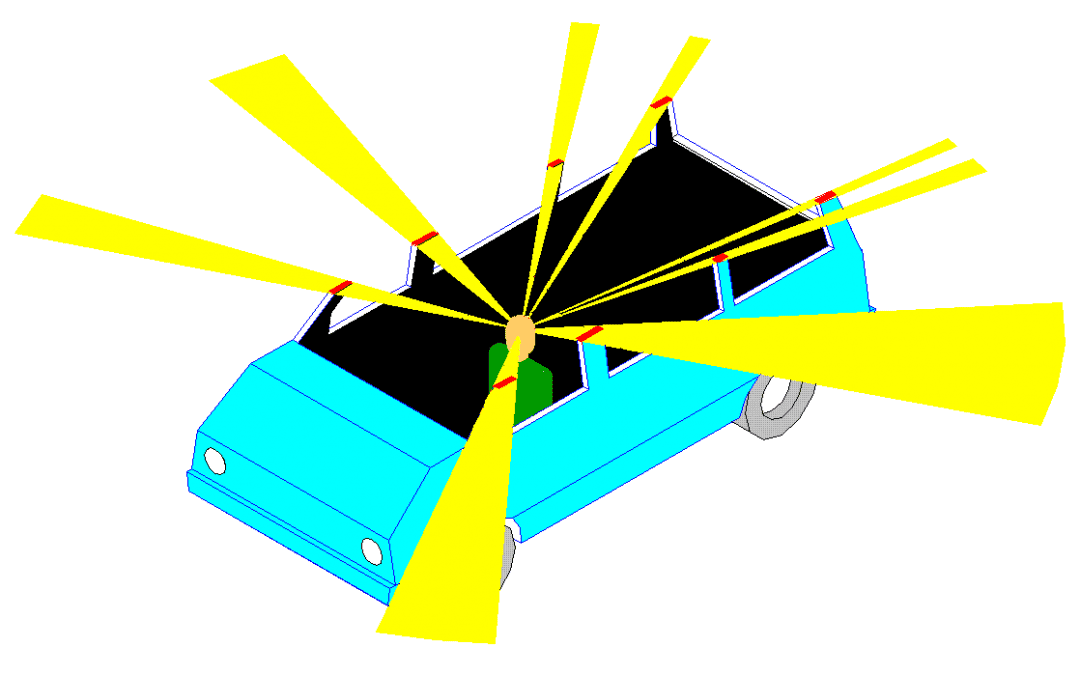According to the National Highway Safety Administration, of the approximately 30,000 fatal vehicle accidents that occurred in the United States last year, over 2,500 of them were attributed to blind spots.
The standard definition of a blind spot is the area of the road that is not visible through the windshield or any of the mirrors. Perhaps the best known of these is the “rear quarter blind spots” which exist on both sides of the vehicle. Other blind spots include areas that are too low to see, particularly in large vehicles.
Pillar Related Blind Spots
The vehicle pillars are the cause of the traditional blind spots. This is due to the compromises that must be made in car design. The most common angle of these pillars is a 40-degree, relatively thin, straight pillar, giving the car an aerodynamic body.
Although this is the best compromise for visibility, safety and aerodynamics, there are still visibility issues.
The largest blind spots on a standard automobile are the “A-” and “B-Pillars,” lettered from the front of the car to the rear.
Pedestrian and lane change accidents are frequently caused by pedestrians or other vehicles moving into one of these blind spots. In pedestrian accidents, the pedestrian is usually attempting to cross a street, moves into the blind spot of a stopped vehicle, and is hit when the vehicle starts moving again.
Vehicular accidents occur either during attempted lane changes or at intersections. In the first case, a vehicle moves into the blind spot of the primary vehicle, and when the primary vehicle attempts to make a lane change, they crash into the second vehicle. In the second case, the driver of the primary vehicle crosses the street, but if another vehicle was in their A-Pillar blind spot, the second vehicle can plow right into them, particularly if the primary vehicle was also in the second vehicle’s blind spot.
Rear Blind Spots
The rear blind spot is the leading cause of back-up collisions. While rear-view mirrors are able to detect vehicle-sized objects behind you, many times they cannot detect low-lying objects or people.
Sadly, this means the most frequent victims of back-up collisions are children.
The frequency of back-up collisions has increased with the popularity of SUVs and other larger vehicles, which have a correspondingly larger blind spot than compact cars. Large trucks have rear blind spots that can prevent the driver from seeing even larger adults or other vehicles.
The Effect of Driver Height
The height of the driver can also impact the size of the blind spots. Shorter drivers have larger rear blind spots, as well as having larger than normal pillar blind spots. Although tall drivers have less trouble with rear blind spots, they also can be negatively impacted by pillar blind spots.
What to Do About Blind Spots
There are resources available to eliminate blind spots. Pillar blind spots can be eliminated through appropriate positioning of the mirrors. Before driving, make certain your mirrors are positioned appropriately for yourself.
Many new cars include back-up cameras and rear-view sensors. In older vehicles, make certain you know where your rear blind spot is, and take common sense precautions, such as turning around completely when backing up, rather than relying on your rear-view and side mirrors.


